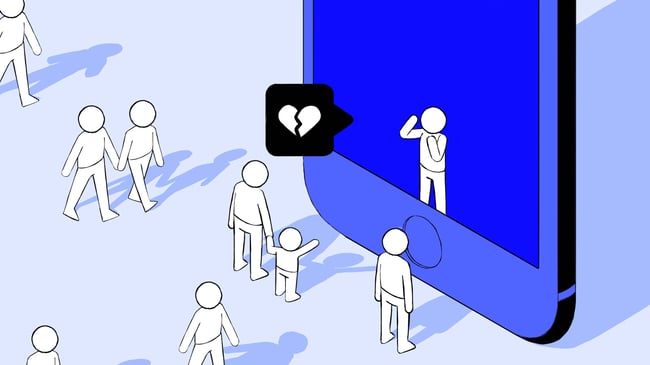

Instagram likes can be addictive: @PAM_BOY, journalist, tells us how he puts up with them.
The Homo Sapiens is an incredibly social species. We love to interact with other members of our communities. The Internet and social media have allowed those interactions to be almost limitless, global and uninterrupted. It takes a lot of introspection to understand the role social media plays on oneself. Social media can be a curse or a blessing. It can be a shield or a sword.
Thirsty
I remember when I first joined Instagram, probably around 2013, I was using it to share photos of lattes and flowers and artworks as did all my friends. I thought there was nothing else to do with this new digital tool. Facebook was still prevailing amongst my peers (I haven’t used Facebook daily since 2016) and Twitter was so messy and violent it terrified me. When the photos of my lattes and flowers and artworks fell out of my followers’ interest, I changed my gameplay. The formula was easy: a shirtless photo (with a caption reading “new haircut” to cover my tracks) with the right hashtags, and boom! The reaction was the opposite of what my photos of lattes and flowers and artworks would garner. The confidence boost was unparalleled. Instagram is digital heroin. I needed my daily fix. My tiny audience of less than a thousand followers was growing relatively quickly, but each new follower activated a snowball effect in my brain. I was using Instagram to produce dopamine in my central nervous system. And, oh boy it felt good! Dopamine is an organic chemical functioning both as a hormone and a neurotransmitter. It’s otherwise known as the “feel-good” hormone or “pleasure molecule”. It is associated with food, love, sex, exercise, gambling, and drugs; once the brain is in contact with those, it sends dopamine along our body’s motivation-reward pathway. The brain doesn’t differentiate what causes dopamine to be sent to the nucleus accumbens, a mass of nerve cells under the cerebral cortex also known as the brain’s pleasure centre. I would years later find out that Harvard University researcher Trevor Haynes would identify social media notifications as a dopamine trigger too. Then, what happens? We want more, of course. I know I wanted more. That’s how addictions start. The word’s etymology comes from a Latin term for “assigned to” or “enslaved by.” It felt so good that the objectification of my body, of the black body, didn’t even bother me. It was part of the game. And the crude messages I would receive started to make me feel like a shell, an empty one.
"I was not being objectified, I was objectifying myself"
Then, as Instagram’s relationship with the fashion world grew stronger, my interest in the potential of the platform for me as a journalist and writer grew too and got me out of the shirtless, slutty posts loop. It helped me realised that I was not being objectified, I was objectifying myself. But wasn’t I meant to become a serious journalist after all? That’s when I decided to use social media to promote not my body but my professional skills, and the years of research I had firmly stuck in the memory drawers of my brain. I thought to myself: “You are a journalist, not a bodybuilder.” My relationship with Instagram immediately changed. I also realised that Instagram had had a deeper, possibly adverse impact on how I perceived myself. It was a reality check. I couldn’t use filters in real life. They’re digital masks behind which we hide our emotions, our feelings, our fears and our mistakes. I didn’t want to hide. I had so much to offer as me. I even thought of changing my pseudonym to my birth name instead of Pam Boy. I did for a second, then backtracked. Pam Boy was better branding, obviously. Posting my fashion critics and articles on Instagram first did not do much for me. The response was lukewarm but somehow the messages and comments were not directly targeted towards my abs but what I was saying. It was a different kind of fix, less destructive in my opinion as it also prompted less comparison with people whose bodies were carved by the Gods and facial features exuding the standards of beauty society forced on us all. Good for them.
How I learned to accept myself
Through my fashion writing, I learned to love myself physically. It might sound weird, but I learned to accept myself and my dark skin that I first saw as such an obstacle in life. It’s not. Evolving in a Caucasian environment during my studies at Central Saint Martins made me doubt my capabilities. Was I enough? Once people started to recognize me for my work and pay attention to my voice, I found out that I was indeed enough. That the colour of my skin was not the definitive characteristic. I had not changed the rules of the game, I had switched to another playground. Using social media as a tool that solely exalts my narcissistic tendencies is not what interests me today. So, I’ve learned how to use Instagram, Twitter, and now Tik Tok to my advantage in order to preserve my mental health. I can sit down for an hour and not look at my phone. I’ve turned off notifications for social media platforms. I don’t need to post a shirtless photo to catch people’s attention – although from time to time I will indulge in the occasional outfit-of-the-day post. My wit and intellect are enough. I’ve managed built a community on social media that values me for who I am because we’re all in this together. Dopamine is still the reward though, but it hits differently.